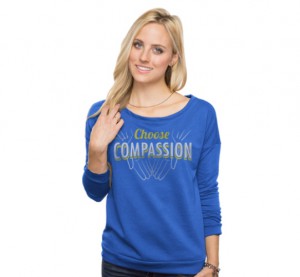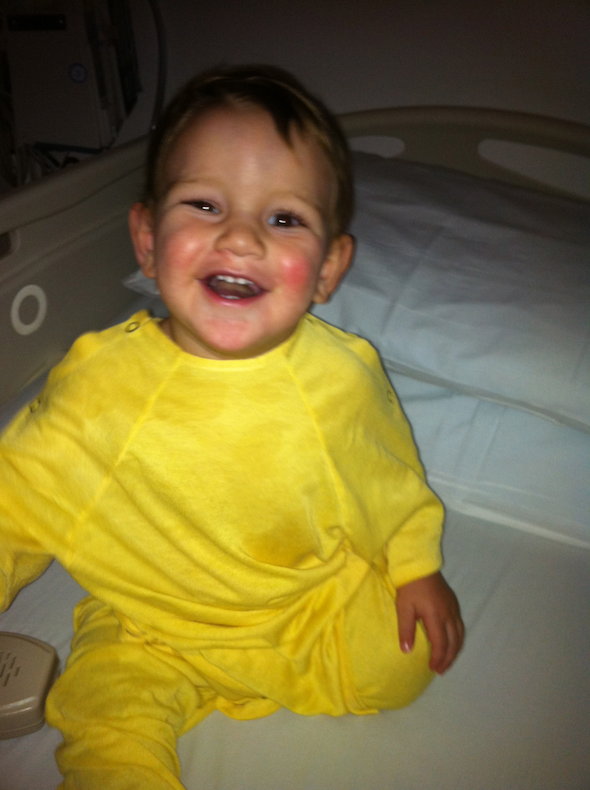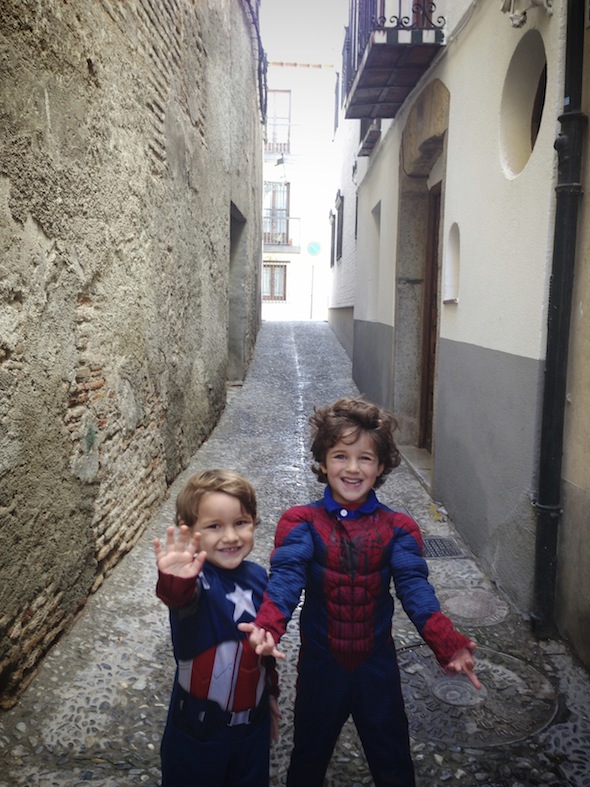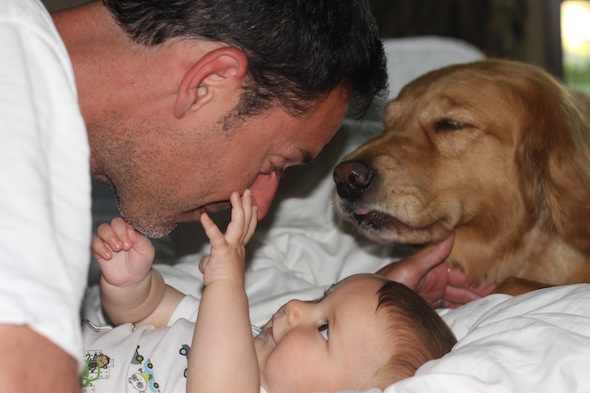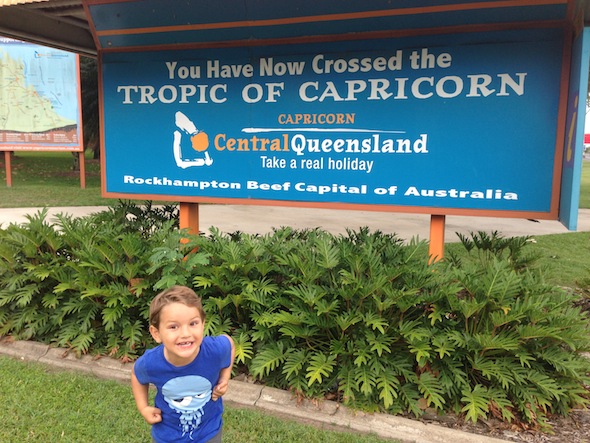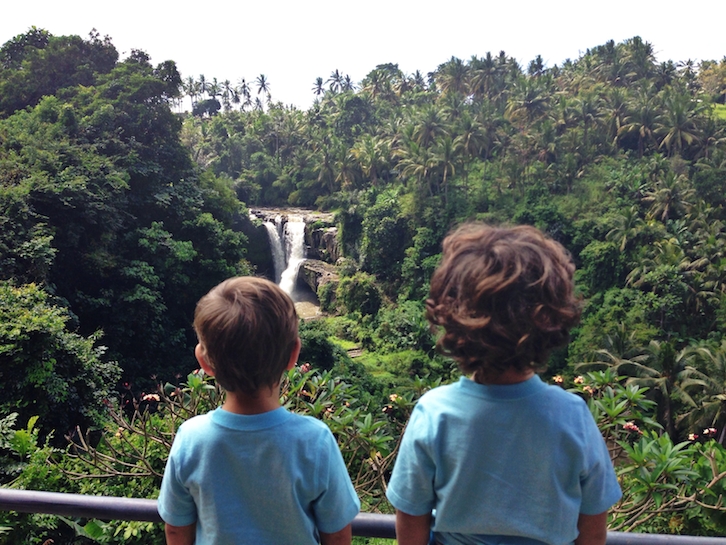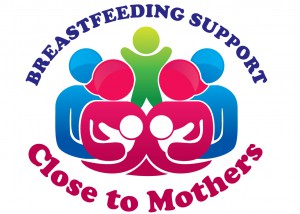I imagine that my journey to Attachment Parenting was typical to some degree. I believe we all learn, grow and evolve as individuals and parents when a child enters our lives.
For me, it’s hard to remember life before my son and even more difficult to remember ideas that I had about parenting. I do know that prior to my pregnancy with my son, I was very career-oriented and spent long hard days either in the office or traveling for business across the country.
My husband and I waited many years before I felt ready to have children, and when I initially became pregnant, I believed that nothing about the professional aspect of my life would change.
I was wrong. Shortly after learning I was pregnant, I became violently ill and was diagnosed with hyperemesis gravidarum, a severe form of nausea and vomiting during pregnancy. I was hospitalized twice and so sick that I remained on medical leave from my job until the beginning of my third trimester.
When I was at the height of my illness, I recall so many things shifting for me internally and spiritually. Most importantly, my view on motherhood began to shift.
Because I and my son were so nutritionally deprived during my pregnancy, I felt compelled to breastfeed him. I felt that because I was unable to nourish him while he was in my womb, I must nourish him after birth.
I know this is not the reason most women give when asked how they arrived at the decision to breastfeed; however, for me it signified a very important shift on my journey to becoming a mom.
In addition, I also started to view my son and I as a team—a partnership whose one goal was survival. This belief made me strong on the days where I was weak, and I truly believed that my son was doing all he could to survive. Reframing our relationship as a loving partnership rather than a hierarchal parent-child dyad drew me even closer to Attachment Parenting.
If this was our relationship and we were bonding so closely for survival in extreme conditions, then how could I possibly allow that to change once he was born?
At the time, I did not understand what this shift meant or how it would change me to my core.
Upon my son’s birth, instinctually, I knew that I didn’t want to be separated from him. My husband shared this feeling as well. During our first few nights with our son, my husband and I took shifts holding him in our arms while he slept. We were both so exhausted, but we felt compelled to be close to him.
Our friends and family advised us on other methods for sleep. Initially, we hesitantly followed their well-meaning advice but quickly learned that it didn’t feel right to us and clearly did not feel right to our son because he was unable to sleep unless he was in our arms or in our bed.
I remember feeling alone and isolated at that time. Doing what we felt and knew was instinctual was discouraged by others in our lives. Despite this external pressure, my husband and I persevered and we continued to follow our instincts. I was compelled to actualize the commitment that I had made to my son during my pregnancy.
Fortunately, I was able to find information about Attachment Parenting as well as related research. This information resonated with my husband and I, and it helped to solidify and strengthen our belief that what we were doing—what felt instinctual and right—actually had a name and was backed by a plethora of research. It was that information and our strong will that enabled us to initially define ourselves as Attachment Parenting parents.
Following these initial insights, I soon discovered a local API Support Group and quickly became an API member. Joining other families who felt similarly about parenting was extremely validating and served to normalize our feelings and our experiences.
Finally, we had a group of nonjudgmental, supportive families who provided us with resources and friendship. Further, as the years progress, our API Support Group has imparted upon us so much more, including friendships and nurturance, continued strength and support, and the unconditional caring that I believe is needed during the parenting years.
I often question why I was subjected with extreme illness during my pregnancy, and I truly believe that we are all presented with life challenges from which we have the opportunity to learn and grow. As difficult and traumatic as the experience, having hyperemesis gravidarum afforded me the opportunity and ability to transform myself as a person and to prepare for my role as mother. It enabled me to envision my son as a loving partner, and for that, I am forever grateful.
My son is now two and a half, and I am currently pregnant with my second son, who is due within the next few weeks. This pregnancy has been equally, if not more, challenging than my first pregnancy.
However, with the support, guidance and wisdom of my family, friends and API Support Group, I have found this experience empowering and strengthening. Although I do know that adding to our family will lead to additional challenges, I feel confident that we will succeed.
Tara Bulin, LCSW-R, is an Attachment Parenting-friendly licensed clinical social worker specializing in working with individuals who have experienced trauma (including pregnancy and birth trauma). She is currently writing her dissertation on women’s experiences after having a high-risk and traumatic pregnancy. Tara also has a private practice and meets with clients in person and via Skype. She is a two-time survivor of hyperemesis gravidarum. The mother of a two-year-old son, she is expecting her second child in March.




